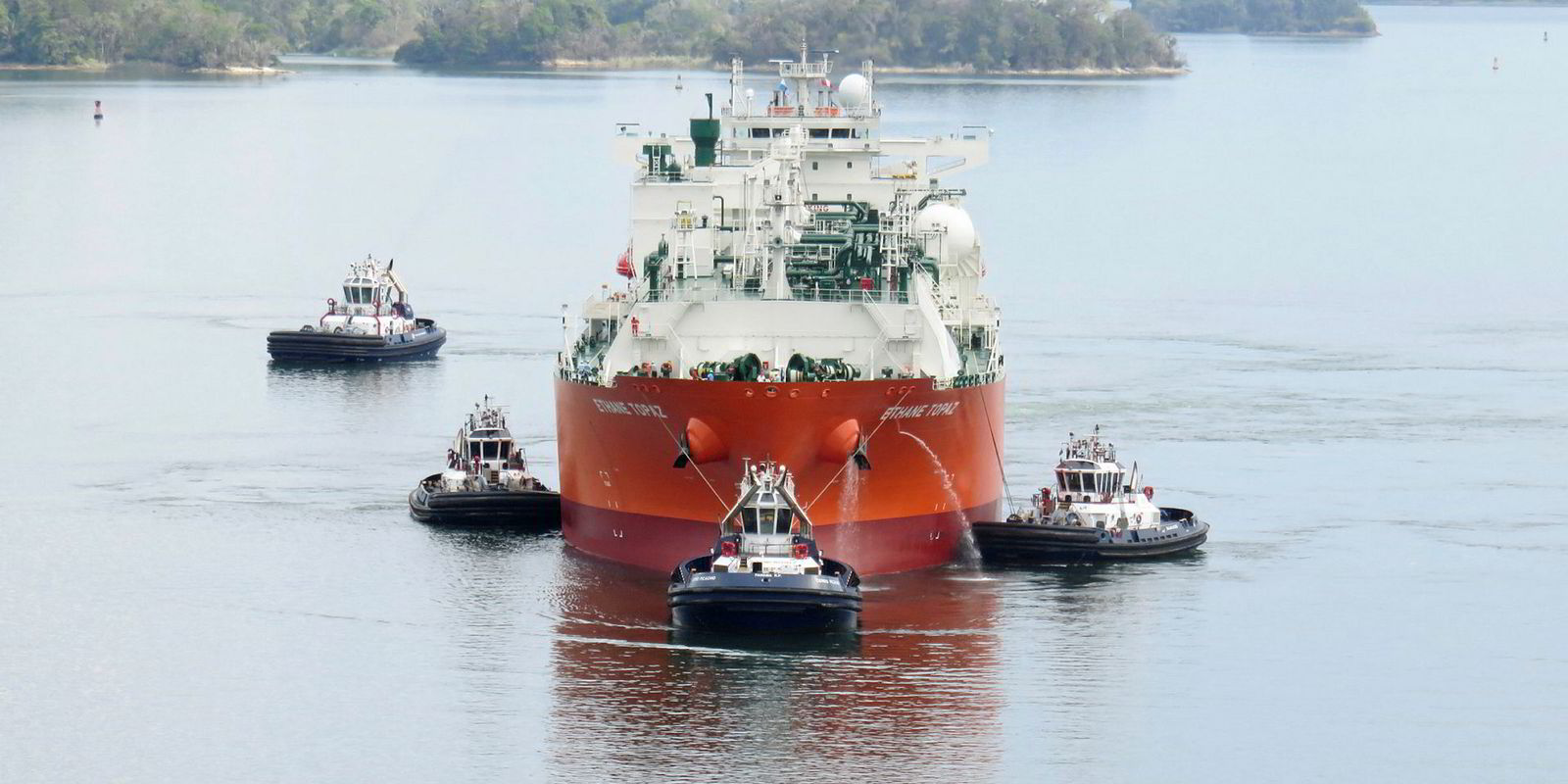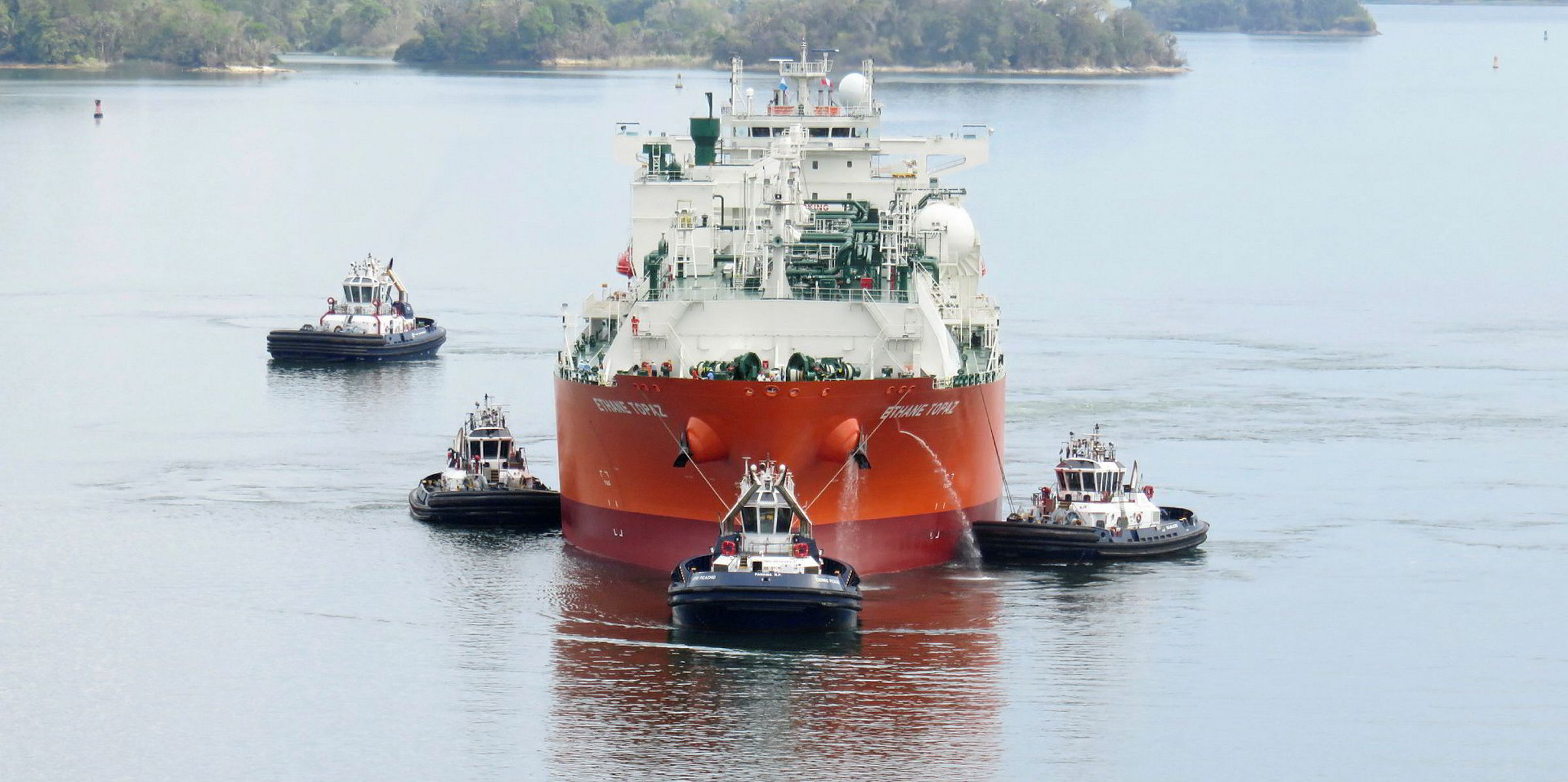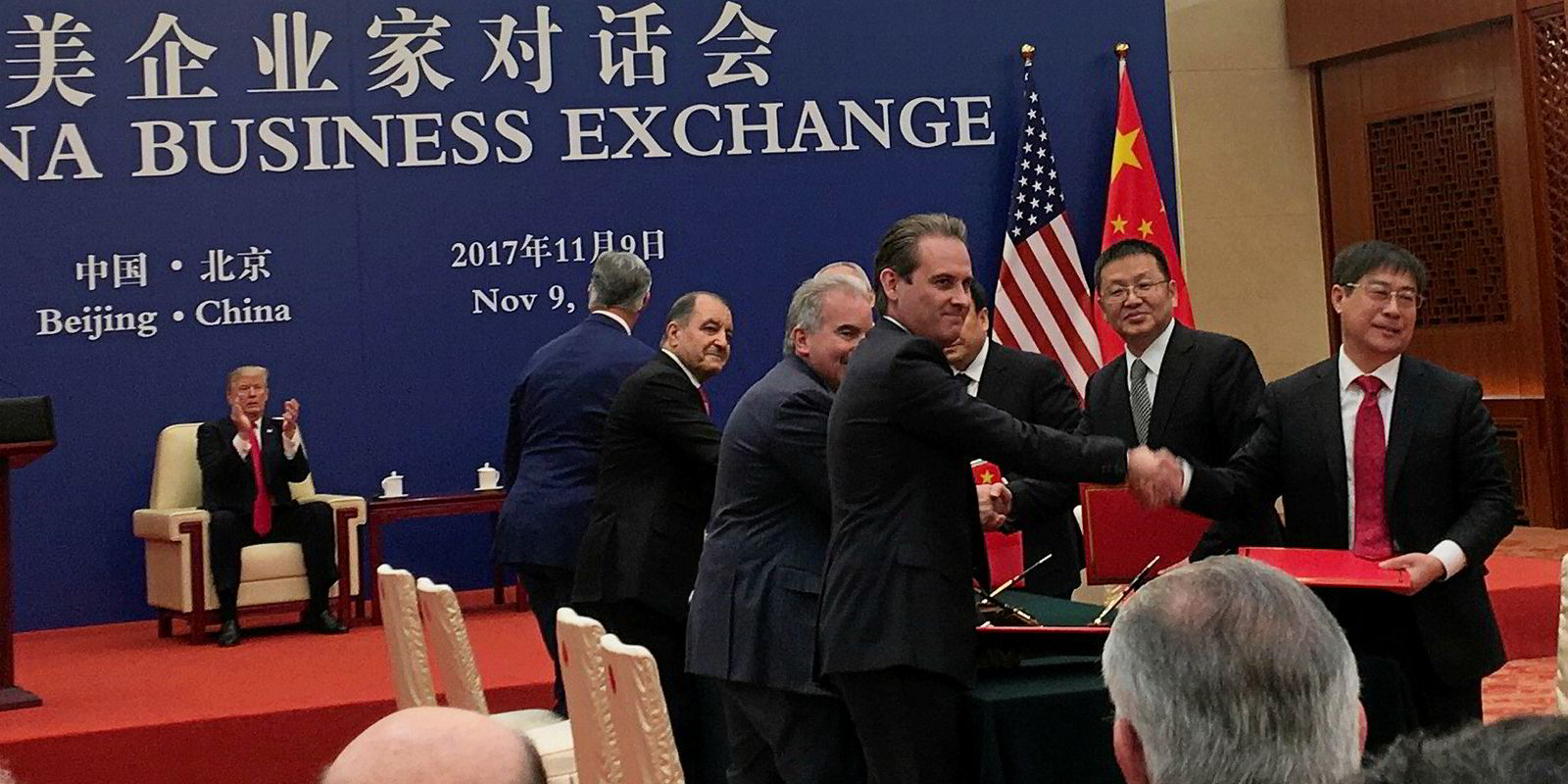American Ethane Co (AEC) expects to announce a new ethane sales deal with buyers in a country outside China, which may allow the company to move forward with the first stages of its plan to build 17 very large ethane carriers (VLECs).
AEC chief executive John Houghtaling said: “It could be that the [US] terminal that will ultimately supply China is built sooner on the back of the fourth contract that we have moving.
“It is possible that we will green light ships and all the terminals prior to the end of the [US-China] trade war. In fact, that may be very likely.”
AEC signed conditionally-binding contracts with Chinese buyers for a combined total of 7.2 million tonnes per annum of ethane sales that would support the construction of its planned 10-mtpa ethane export terminal near Beaumont on the US east coast.
But as Houghtaling described, “literally within a few minutes” of him sitting down to sign the sales contracts with his Chinese buyers in November 2017, US President Donald Trump gave a speech indicating he was going to start trade negotiations with China.
“All we needed were permits from the Chinese to build those terminals,” Houghtaling said, speaking to TradeWinds after a short presentation at ABS’ stand at Gastech in Houston. “Those permits, because of the trade wars, unexpectedly are being hung up a bit.
“I think we’ve been a little bit of a political football with our particular contracts, which is unfortunate.”
'Very positive'
But the upbeat chief executive, who arrived in Houston straight from a “very positive” meeting with the US Senate Committee on Energy and Natural Resources in Washington DC, said he believes AEC may be able to move forward on the basis of this new upcoming sales deal.
He said AEC has engineered to build its US export terminal with four trains that can be built in stages, so it is possible the company may begin its construction with just one contract in place.
Houghtaling said that with this incoming contract — details of which he is unable to disclose at present — and the three in place in China, the company will require 17 VLECs of 150,000 cbm each.
AEC started out looking at ethane carriers of 96,000 cbm. It then began brainstorming about how big it could go on vessels, coming up with a larger design that fits all parameters, company officials said.
Working with classification society ABS and membrane-type designer GTT, AEC upped the size to 150,000 cbm — technically transforming it into an ultra large ethane carrier in shipbuilding terms — to maximise the ships’ efficiency on long-haul trades.
“If we are moving these volumes, then we want to build the largest vessels possible,” Houghtaling said.
The fact that ethane is currently a point-to-point market also allows AEC to build project-specific vessels, he added. “Doing something new is often exciting for some, scary for others.”
Houghtaling said AEC has an agreement with China Merchants Group and certain, as yet unnamed, shipbuilders to build the ethane carriers needed to supply the 7.2 mtpa to the three planned Chinese terminals.
AEC plans to sell its ethane volumes ex-ship and will charter-in the vessels from China Merchants.
“We are committed to moving forward with the shipping,” Houghtaling said.
There are seven VLECs in operation worldwide, with another seven newbuildings under construction in South Korea and China.







